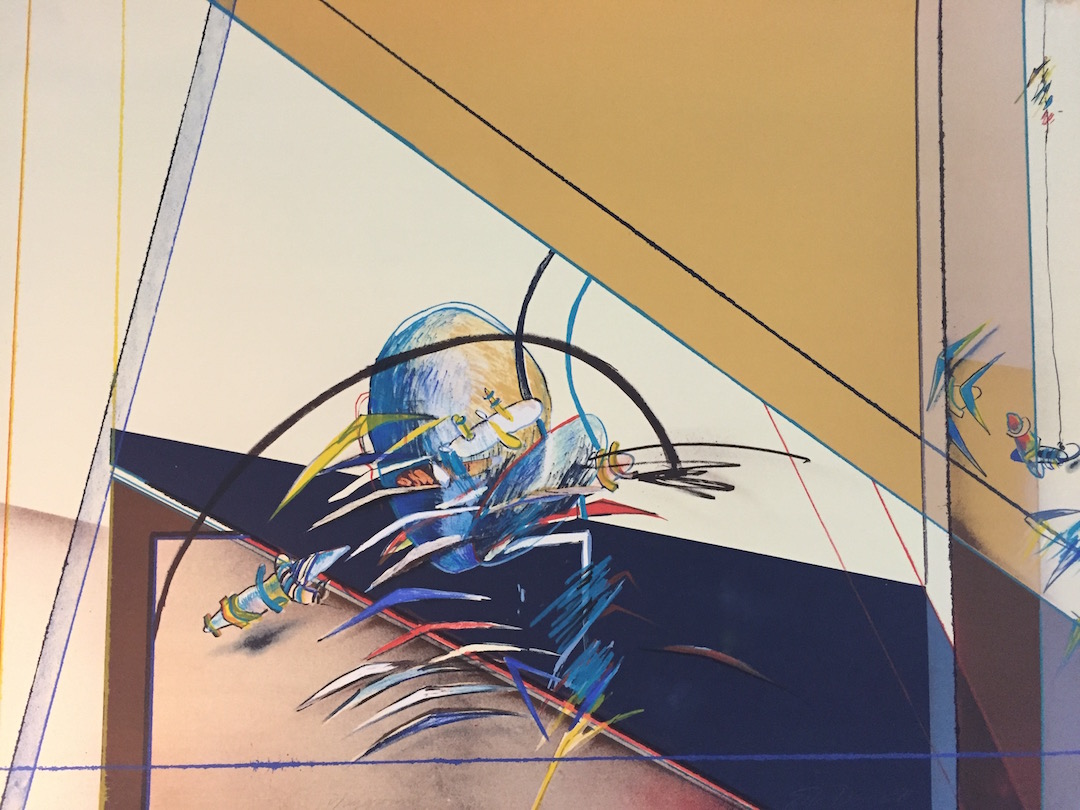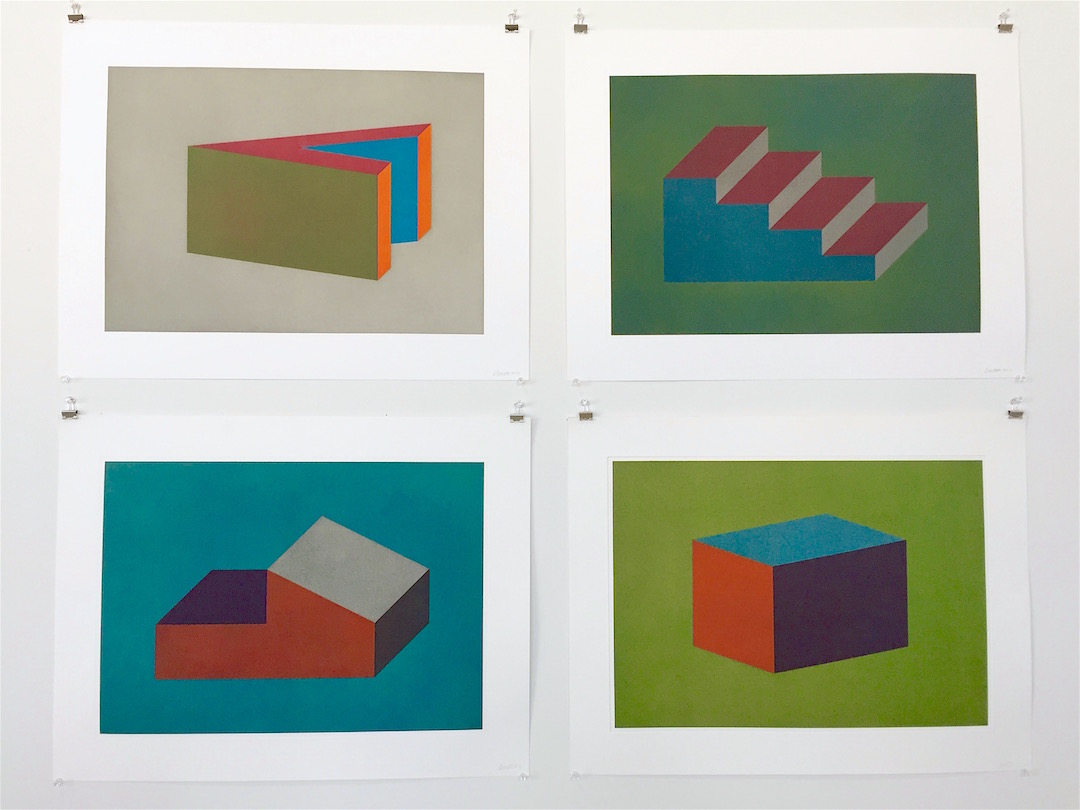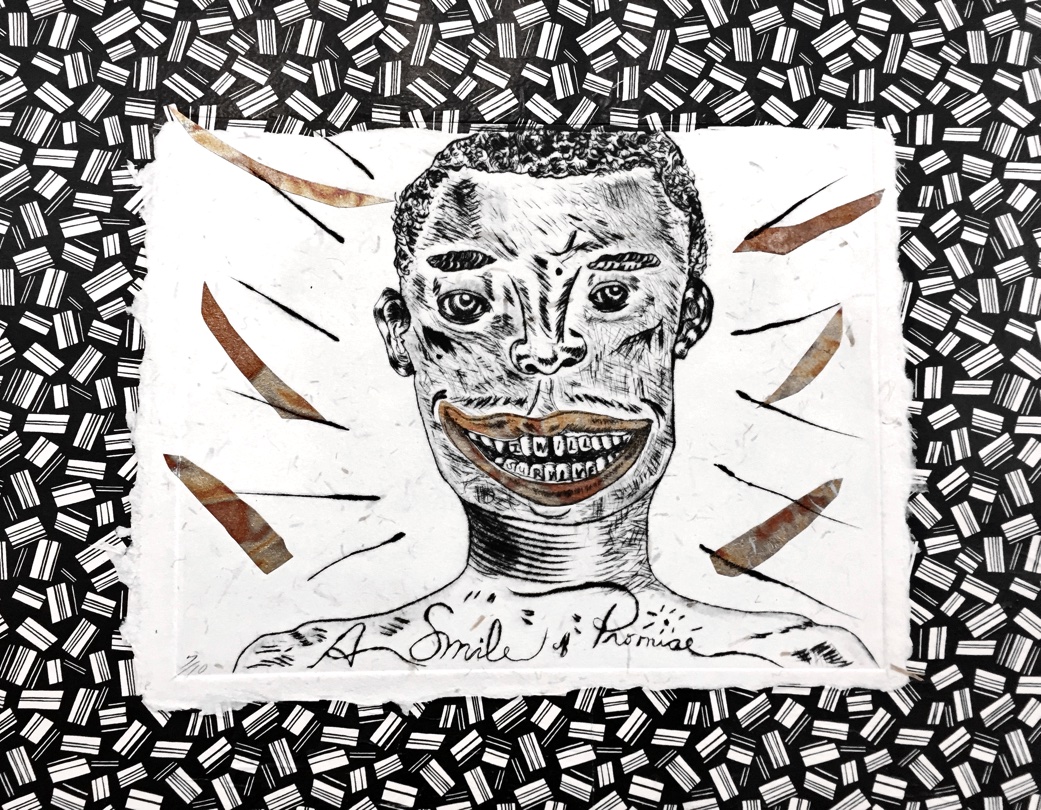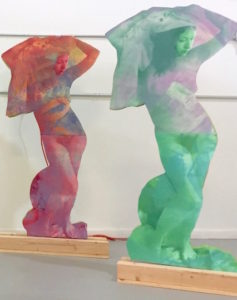
Elba Damast, “Playground” Multiple lithography, “The Art of the Chop”, Inky Editions, Hudson, New York, Photograph Katy Hamer, 2016
At one time, print making was not only an art form but a true —even if timely— method of reproduction. As technology has evolved, the art of the print is less actively appreciated or practiced in the contemporary realm. However, in a large former warehouse in Hudson, New York, George Tsalikis established Inky Editions in the spring of 2015. It is a formal print studio with the front of the interior designated as a gallery. On view in the gallery is “The Art of the Chop with Lisa Mackie” a curated selection of works on paper spanning forty years. The examples represent a broad range of print styles including monotype, intaglio, serigraphy, lithography and photo-based process. Each print is either a Printer’s Proof, Workshop Proof or BATs (Good to Pull) Print in collaboration with a varied group of artists yet all made in the studio of master printer.
Having worked at the Kathy Caraccio studio and workshop before venturing on her own, Mackie is identified in her prints via a small, raised symbol near the bottom of the paper referred to as a chop. Every professional printer has his or her own chop which identifies their studio and she has been using the same chop since 1973. On using this identifying mark Mackie states, “My chop is derived from the hand of Fatima. I always think of it as a hand of good fortune. Also it is the same backwards and forwards like the mirror images of the plate or matrix to the print.” Walking through the exhibition with prints by Wolf Kahn, Sol LeWitt, Marylyn Dintenfass, Emily Mason, Leo Manso and others, each piece carries a certain lineage of time depicting the vision of each individual artist yet all —minus the LeWitt— bear her chop.

Sol LeWitt, “Forms Derived From a Cubic Rectangle” (1999) Etching aquatint, “The Art of the Chop,” Inky Editions, Hudson, NY, Photograph Katy Hamer, 2016
The printing process as an art form can be implemented for purposeful repetition even if resulting in understated variations each time. It is here where the printer, depending on their skill-set and ability to take particular liberties, becomes a collaborator in the work, participating in a more direct, hands-on way then the artist whose surname it bears. As unique as each print is, some are more dynamically successful than others. The most recognizable name, yet also the name perhaps least likely to be associated with the printing process, is Sol LeWitt. Four etching aquatints by LeWitt, titled “Forms Derived a Cubic Rectangle” (1999) were made using plates from the Jo Watanabe Studio in Brooklyn and printed at the Mackie studio. Hanging in a geometric formation, they are color-blocked and surprisingly lack the many intricate details and marks any LeWitt fan is accustomed to specifically in his site-specific wall drawings. However, these, in an addition of 20, are more affordable and easier to live with or transport.

Margo Humphrey, “A Smile of Promise” (1993) Chine collie, drypoint, handmade paper and gift paper, “The Art of the Chop”, Inky Editions, Hudson, New York, Photograph Katy Hamer, 2016
What the exhibition, proves through various techniques is that printmaking, while no longer as fashionable as it once was, is by no means dead. Several works by from the 1980’s, including a subtly toned piece by Darryl Hughto titled “Grotto” from 1984, still looks surprisingly fresh and painterly. Another example is by Elba Damask (1944-2005) whose “Playground” deceptively teeters between architecture and abstraction nearly channeling the frenetic energy of Francis Bacon. While most of the work in “The Art of the Chop” flirts with abstraction, a few artists utilize the figure whether fantastical or representational. This includes “A Smile of Promise” (1993) by Margo Humphrey also including paper cut-outs on the surface for texture and sheen.
With just over forty prints on view, the exhibition speaks less about what is on the surface and more about the variations of branding over the years. Before there was Instagram there was the chop, before digital printing, there was a rigorous printmaking practice. If in Hudson, a recommended approach that visitors take is to lean in and look at the details. Since the chop is embossed it isn’t meant to draw attention, but can be quite amusing to look for on each of the rectangular surfaces. Additionally in a side gallery Lisa Mackie has included some of her own work in a small show similarly exhibited at the June Kelly Gallery in 2014, titled, “Earth/River River.” Inky Editions will have both exhibitions on view until November 12th, 2016.

